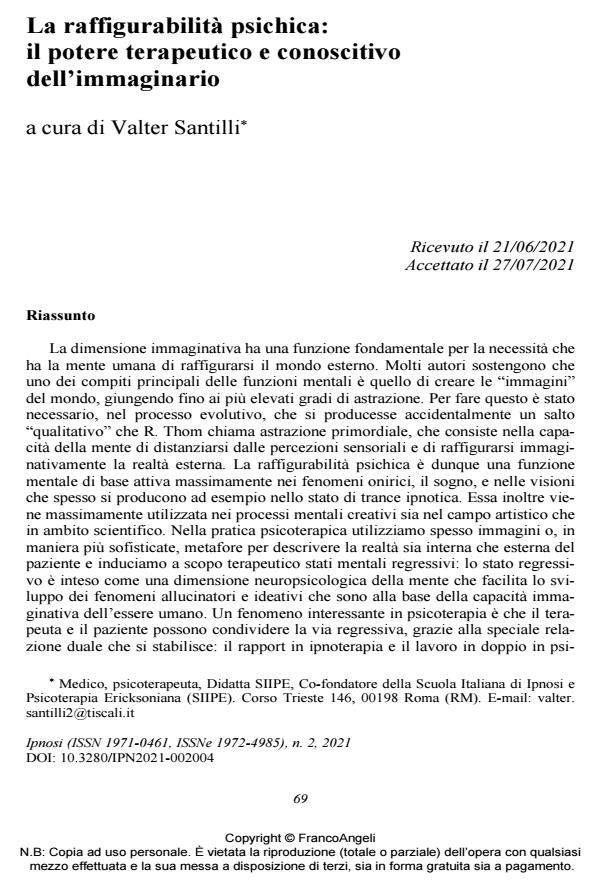The Psychic Figurability: the therapeutic and cognitive power of the imaginary
Journal title IPNOSI
Author/s Valter Santilli
Publishing Year 2022 Issue 2021/2
Language Italian Pages 11 P. 69-79 File size 199 KB
DOI 10.3280/IPN2021-002004
DOI is like a bar code for intellectual property: to have more infomation
click here
Below, you can see the article first page
If you want to buy this article in PDF format, you can do it, following the instructions to buy download credits

FrancoAngeli is member of Publishers International Linking Association, Inc (PILA), a not-for-profit association which run the CrossRef service enabling links to and from online scholarly content.
The need for the human mind to figure or picture the external world is funda-mentally dependent on the imagination. Many authors hold that the ability to create "pictures" of the world, up to and including the highest degree of abstraction, is a fundamental component of our mental functions. For this to be possible, a qualitative leap ahead in evolution was needed to produce what R. Thom defines as the primary intuition, or the mind’s ability to advance from simple sensorial perception to actually imagining external reality. This psychic figurability is hence a basic mental function which is highly active in dreamlike phenomena and in dreams, and in the visions which often arise in the hypnotic trance state. It is also massive-ly involved in the creative mental processes of the fields of both science and art. In the practice of psychotherapy, we frequently use images, or, more elaborately, metaphors, to describe both the internal and the external realities of a patient. For therapeutical purposes, we also induce regressive states, a neuropsychological dimension that facilitates the development of the ideational and hallucinatory phe-nomena that underpin the human capacity to imagine. One interesting aspect of psychotherapy is that both the therapist and the patient can share this regressive pathway, thanks to the special dual rapport that arises in hypnotherapy, and the shared work of psychoanalysis. Not only the state of mind but also the product of psychic figurability is shared, as in the clinical case described in the article.
Keywords: figurability, imaginary, illusion, duality, hypnotic trance/regression, rapport/shared work of psychoanalysis.
Valter Santilli, La raffigurabilità psichica: il potere terapeutico e conoscitivo dell’immaginario in "IPNOSI" 2/2021, pp 69-79, DOI: 10.3280/IPN2021-002004